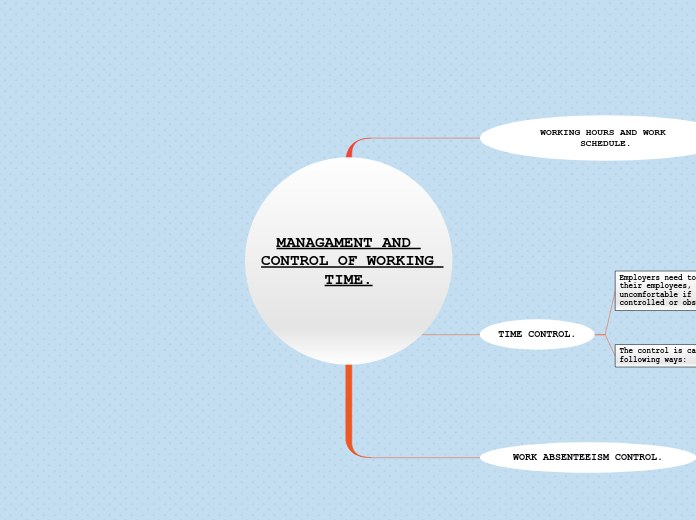MANAGAMENT AND CONTROL OF WORKING TIME.
WORKING HOURS AND WORK SCHEDULE.
WORK TIME
40 hours per week, 8 per day .
15 minutes of rest per day and one and a half days per week.
REST TIME
Between a day and another 12 hours of rest, minimum 15 minutes a day and a day and a half a week.
UNDERAGE WORKERS
Minimum daily rest time of 30 minutes and two days per week.
NIGHT WORK AND SHIFT WORK
Night work is regulated by time restrictions. The least of them can't work at night. They are declared as dangerous and unhealthy.
OVERTIME
A year a worker can only do 80 hours of overtime and at night and for minors are prohibited.
REDUCTION OF THE WORKING DAY FOR FAMILY REASONS.
A worker has the right to a reduced workday as long as he or she is in the care of a child under 12 or a person in need.
LEAVE
Workers must know the days they are entitled to vacation at least two months before these. The calendar is fixed in each company.
They can get paid leave as long as they are on this list:
-Birth of a child or death (death of a family member).
-Moving.
-One hour a day to breastfeed your child under nine months.
-Public obligations.
-Union or worker representation activities.
TIME CONTROL.
Employers need to control the time of their employees, although some find it uncomfortable if the worker feels controlled or observed.
The control is carried out in the following ways:
Signing in and out of a document daily.
Checking in and out with a card (not very safe as a worker may ask another worker to swipe their card in their absence).
With a print or facial scanner.
WORK ABSENTEEISM CONTROL.
TYPES OF ABSENCES:
excused absences
unexcused absences
TYPES OF EXCUSED ABSENCES
Sickness, death of a family member...
TEMPORARY INCAPACITY
When the worker can justify a permanent illness or disability on the job.
